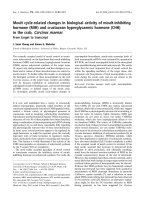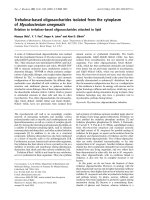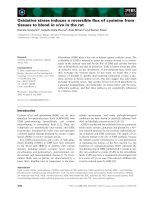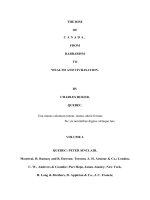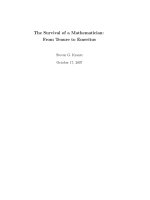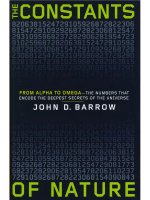The concept of resonance from physics to cognitive psychology
Bạn đang xem bản rút gọn của tài liệu. Xem và tải ngay bản đầy đủ của tài liệu tại đây (1.08 MB, 3 trang )
THE CONCEPT OF RESONANCE:
FROM PHYSICS TO COGNITIVE PSYCHOLOGY
Prof. Jérôme Dinet1 & Prof. Muneo Kitajima2
1
2
Psychology & Neurosciences Lab (2LPN), Université de Lorraine
Email :
Department of Management and Information Systems Engineering
Nagaoka University of Technology
Email :
THE CONCEPT OF RESONANCE:
FROM PHYSICS TO COGNITIVE PSYCHOLOGY
ABSTRACT. There are very few connections between physics and cognitive psychology. But in this
paper, we assume that recent models inspired by concepts issued from physics and problem
solving cognitive processes like the Model Human Processor with Real Time Constraints (MHP/RT)
model (Kitajima and Toyota, 2012) allow to better describe and predict human behaviors
especially in complex and dynamical environments where interactions between several bands and
space-time constraints exist. After presenting the importance of the concept of resonance in
physics and in cognitive psychology, the deterministic chaos in human action and behavior will be
described, by focusing on an innovative model directly inspired by models issued from physics and
problem-solving cognitive processes, Model Human Processor With Real Time Constraints
(MHP/RT). If nowadays, the distance between physics and psychology is very prominent, the main
goal of this paper is to defend the necessity to (re-)create strong relationships between physics
and psychology to better understand and predict human behaviors because these situations are
the majority of situations where an individual takes actions (such as walks, reads, stops, watching
the other pedestrians’ behavior in complex buildings or in street, etc.).
Keywords: Physics; Resonance; Deterministic chaos; Cognitive modelling
Prof. Jérôme Dinet
Prof. Muneo Kitajima
THE CONCEPT OF RESONANCE:
FROM PHYSICS TO COGNITIVE PSYCHOLOGY
Prof. Jérôme Dinet
Muneo Kitajima currently works at the Department of Management and Information Systems
Engineering, Nagaoka University of Technology. His recently published book “Memory and Action
Selection in Human-Machine Interaction” (2016) proposes a unified theory of action selection and
development by integrating PDP, Two Minds, and Layered structure of human action. The theory
provides a comprehensive view of how our brain functionally works in our daily life. His current
interest is to understand the implications of the theory to development of skill of adaptive
problem solving, the important skill for survival.
He works with Jérôme Dinet since many years to better understand human behaviours in complex
and dynamic situations (eg., pedestrians in urban areas). Jérôme Dinet is interested in the
development of cognitive processes, specially for users with specific needs (young children,
children with autism spectrum disorders, elderly people, …) by combining quantitative and
qualitative data obtained in experimental and ecological studies.
Together, they are trying to describe and modelise human behaviours by using concepts issued
from complementary approaches such as physics and psychology.
Keywords: Physics; Resonance; Deterministic chaos; Cognitive modelling
Prof. Muneo Kitajima
